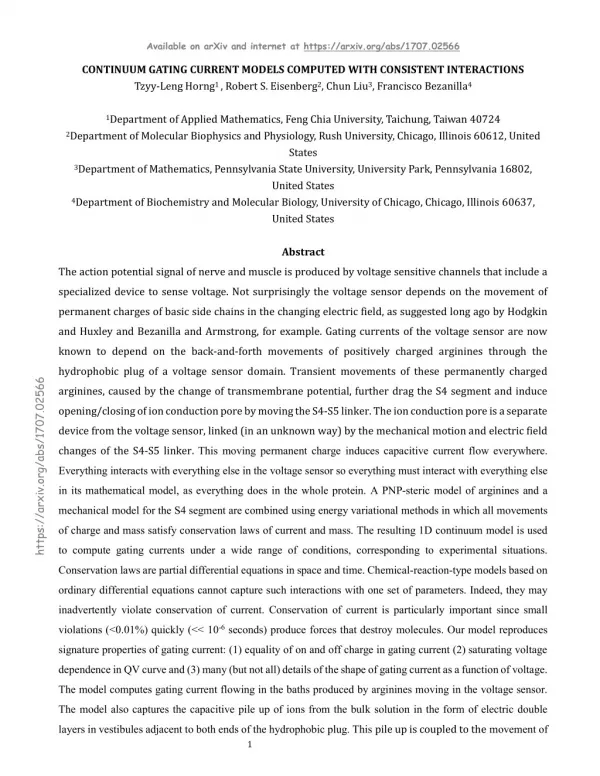Voltage Sensor of Nerve Membranes and Ion Channels
The action potential signal of nerve and muscle is produced by voltage sensitive channels that include a specialized device to sense voltage. Gating currents of the voltage sensor are now known to depend on the back-and-forth movements of positively charged arginines through the hydrophobic plug of a voltage sensor domain. Transient movements of these permanently charged arginines, caused by the change of transmembrane potential, further drag the S4 segment and induce opening/closing of ion conduction pore by moving the S4-S5 linker. The ion conduction pore is a separate device from the voltage sensor, linked (in an unknown way) by the mechanical motion and electric field changes of the S4-S5 linker. This moving permanent charge induces capacitive current flow everywhere. Everything interacts with everything else in the voltage sensor so everything must interact with everything else in its mathematical model, as everything does in the whole protein. A PNP-steric model of arginines and a mechanical model for the S4 segment are combined using energy variational methods in which all movements of charge and mass satisfy conservation laws of current and mass. The resulting 1D continuum model is used to compute gating currents under a wide range of conditions, corresponding to experimental situations. Chemical-reaction-type models based on ordinary differential equations cannot capture such interactions with one set of parameters. Indeed, they may inadvertently violate conservation of current. Conservation of current is particularly important since small violations (<0.01%) quickly (<< 10-6 seconds) produce forces that destroy molecules. Our model reproduces signature properties of gating current: (1) equality of on and off charge in gating current (2) saturating voltage dependence in QV curve and (3) many (but not all) details of the shape of gating current as a function of voltage.
★
★
★
★
★
300 views • 26 slides
